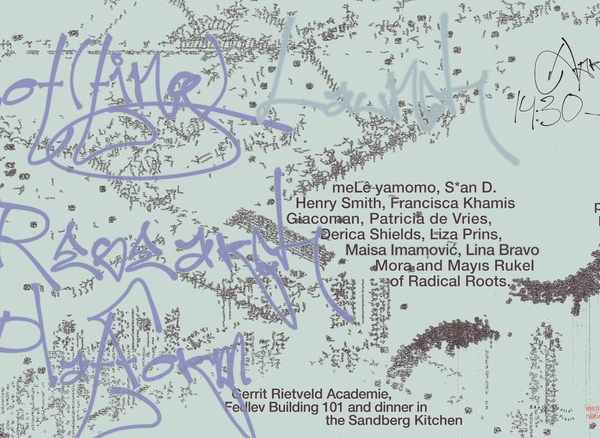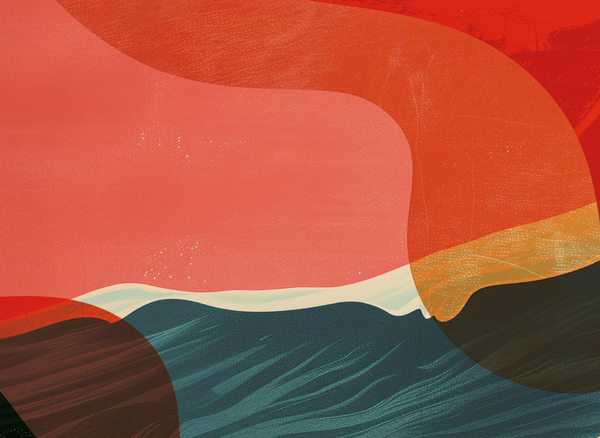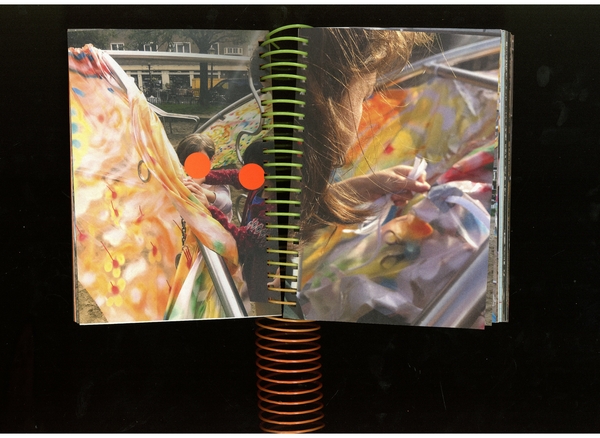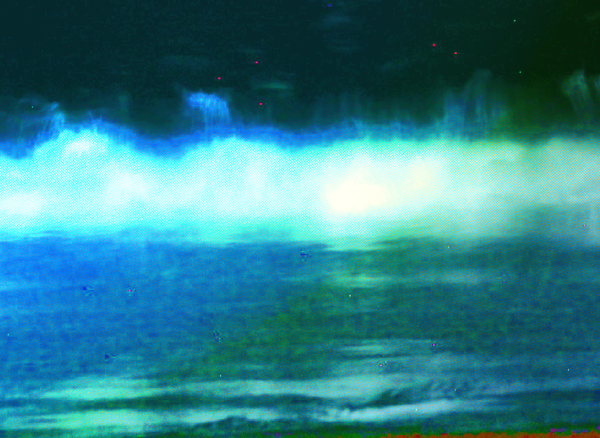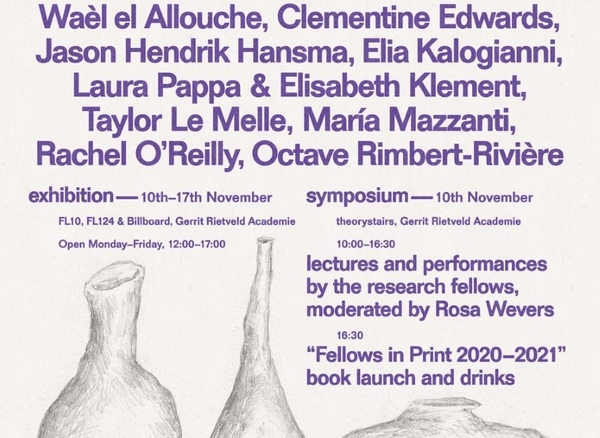Research Group Art & Spatial Praxis (LASP)
Art & Spatial Praxis is a research group focused on artistic and design imaginaries that reframe and reclaim cityscapes.
Building on the work done in feminist geography, Black studies, environmental humanities, philosophy and cultural studies, we aim to craft more equitable, common, queer, and subversive engagements with our (urban) surroundings, and nurture the conditions for making new geographies possible. Our interests range from storytelling, theory as praxis, scenography and spatial design to installations and interventions in (digital) infrastructures, materials, archives, and institutions.
Art & Spatial praxis collaborates with researchers, designers, and artists inside and outside the academy, locally and internationally. Art & Spatial Praxis is headed by Dr. Patricia de Vries.
About The Plot
The thematic focus of Art & Spatial Praxis builds on Sylvia Wynter’s rich notion of the plot. With her conception of the plot, Wynter connects the historical enclosures of the plantation to today’s cityscapes. A plantation logic, she argues, can be traced to today’s ordering of cities, public spaces and neighbourhoods.
Plots were provision grounds enslaved Africans could cultivate. On these grounds, often at some distance from the villages of the plantation, the enslaved could grow their own food. Plantation owners made these little plots of land available, often mountainous and of poor quality, to reduce operative costs -- to maximize profit. These plots were places enslaved people collaborated in relation to, but also in relative autonomy from the violence of the plantation. Wynter writes that on these plots, a social order with its own structure of values existed. They stand for alternative logics that existed alongside the extractive and violent logic of the plantation. Wynter does not romanticize the plot and emphasizes that it does not exist outside of the violent ordering of the plantation. It does not represent free zones or safe spaces. Plots were subject to the plantation, a product of a violent colonial and capitalist order and an alternative to it. This is to say, it is not plot versus plantation but rather plot-and-plantation: they implicate each other, and they inhabit the same locus.
If the plantation is an ongoing locus that can be tracked to today’s cityscapes, so too are plots. Thus, where the orderings of today’s cityscapes stand for the ongoing locus of plantation history, the plot stands for other possibilities that are always present. The plot illustrates a social order that develops within the context of systems that are racist, capitalist, sexist, ableist, and so on. It represents possibilities rooted in different values and different social orders. This is to say, cityscapes and public spaces are relational, contingent and always contested. The plot challenges the forces of domination, appropriation, exploitation, commodification, gentrification, segregation, digitization, and quantification. It fosters assemblages between people and things that seek alternative ways of relating – not outside the plantation or off the grid, but in our urban realities.
Plot Work as Artistic Research
Wynter’s understanding of the plot-and-plantation has travelled throughout the humanities, social and environmental studies. What if the plot migrates further and extends to artistic practices, forms of making, crafting, imagining, thinking, and doing urban realities? What if plot work is a praxis that is socially enacted, embodied, narrativised, and materialised in art practices. What could the plot as artistic praxis be(come)? What constitutes it? What conditions and sustains it? What kind of behaviour, ways of seeing, knowing, and relating does it encourage? In short: what does the plot mean as a spatial art praxis in today’s cityscapes?
These are the questions the research group Art & Spatial Praxis engages with. These are also pressing questions in the increasingly regulated, privatized, surveilled, and diminished public spaces in ever-more neoliberal cities.
The Team
Patricia de Vries is research professor at Art & Spatial Praxis at the Gerrit Rietveld Academie. Prior to her position at the Rietveld Academie De Vries worked as assistant professor at University of Maastricht (faculty of Arts and Social Sciences) and as researcher and project coordinator at the Institute of Network Cultures (INC) in Amsterdam. She obtained her PhD at Erasmus University in 2020 with her dissertation titled Algorithmic Anxiety in Contemporary Art - A Kierkegaardian Inquiry into the Possible in Algorithmic Culture
Liza Prins is researcher and project coordinator at Art & Spatial Praxis. She studied fine arts at the Gerrit Rietveld Academie and the School of the Art Institute of Chicago. She also holds a master’s degree in artistic research from the University of Amsterdam, where her research explored the intersections of feminist, new materialist methodology and performative practices. She is an artist, researcher and writer with a focus on feminized and pre-industrial labor and the material and immaterial conditions and tools for social organization that spring from it. Using collaborative performance methods touching on re-enactment techniques and improvisation, she seeks to re-establish a connection with these resources and social imaginations.
Laura Dubourjal is production assistant at Art & Spatial Praxis. She studied at the Audio-visual department (VAV) of the Gerrit Rietveld Academie (2018) and holds a master’s degree from the Dutch Art Institute at ArtEZ (2022). Her practice as a multidisciplinary visual artist and fashion designer explores different thematics of identity and performance. Having grown up in a family of actors, she often draws references from classical theater techniques by excavating fragments and examples of emotional memory, behavioral landscapes and visual fabulations. Her performative practice is currently developing towards interactive role playing methodologies and thinking through the form of the open rehearsal as a space to collectively and playfully reclaim.
Plot(ting) research group
The Plot(ting) research group started in May 2023 and is formed by Taylor le Melle, G, Giulia Damiani, LOOM (Radna Rumping, René Boer and Katía Truijen), Flavia Pinheiro, Mariana Martinez Balvanera, Francisca Khamis Giacoman, Lietje Bauwens, María Mazzanti and Chris Julien. They will join Patricia de Vries (lector of the research group Art & Spatial Praxis) and Liza Prins (coordinator of the research group Art & Spatial Praxis) and meet on a monthly basis to discuss theoretical and material manifestations that speak to Sylvia Wynter’s concept of the plot, while focusing on conceptual, artistic and design imaginaries that reframe and reclaim cityscapes.
Website & contact
For more information about our research activities at Rietveld Sandberg Research please visit our website research.rietveldsandberg.nl or contact the Research Bureau: researchsupport[at]rietveldacademie.nl.
Please note: the Lectoraat of Art & Public Space (LAPS) has been discontinued since November 2022. LAPS has since changed to LASP: Art & Spatial Praxis.
